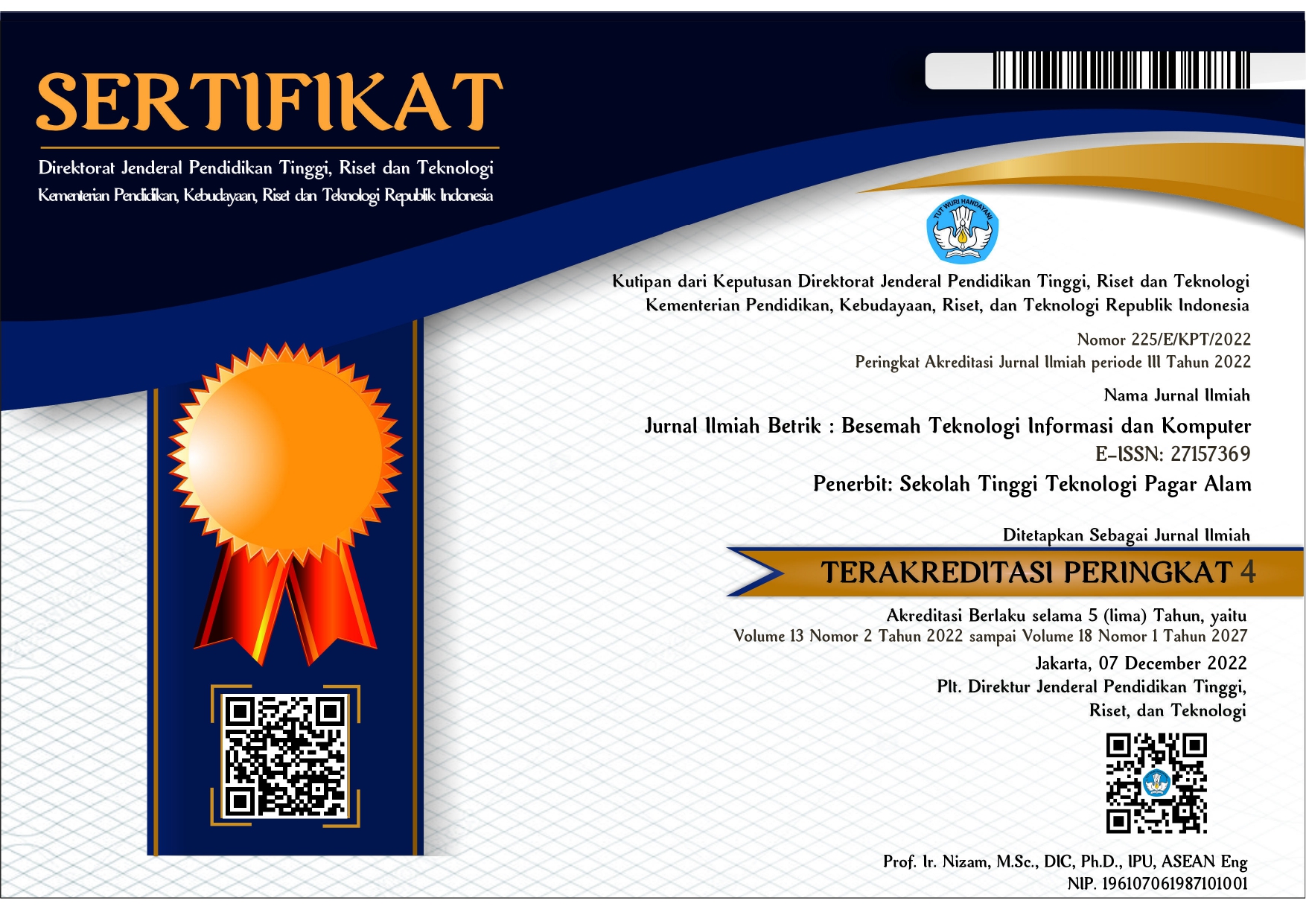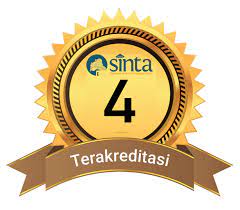KOMPARASI ALGORITMA K-MEANS DAN FARTHEST FIRST DALAM PENGELOMPOKKAN HASIL PRODUKSI TANGKAP IKAN
DOI:
https://doi.org/10.36050/betrik.v14i03%20DESEMBER.164Keywords:
Clustering, K-Means, Farthest FirstAbstract
This research aims to group (clustering) fish catches using the k-means and farthest first algorithms. Therefore, this research can help provide information about what types of fish are superior, what types of fish produce the most and the least fish production, to make it easier for fishermen to prepare for the next fishing catch. Data taken from the Muara Enim district fisheries service. The Muara Enim district fisheries service has a fisheries service program, one of which is the capture fisheries development program where research is carried out on the type of fish production produced. As for the distribution of capture fisheries, the types of water areas are rivers, swamps and lakes. The cluster results from the k-means algorithm are C0 consisting of jelawat, sepat siam and lele, C1 consisting of baung putih, lais and betok, while C2 consists of mujair, toman, patin, seluang and gabus. Meanwhile, the farthest first algorithm C0 consists of mujair, toman, patin, seluang, gabus, and lele, C1 consists of jelawat and sepat siam, C2 consists of baung putih, lais, and betok. The results of production based on the number of production from the k-means method are that the highest production consists of jelawat, sepat siam and lele, medium consists of baung putih, lais and betok, and low consists of mujair, toman, patin, seluang and gabus, while the highest production farthest first algorithm consists of mujair, toman, patin, seluang, gabus, and lele, medium consists of jelawat and sepat siam, low consists of baung putih, lais, and betok. With an execution time for the k-means algorithm of 0.01 seconds and the farthest first algorithm of 0 seconds.
References
E. K. Putra, “Komparasi Farthest First Dan K-Mean Pada Clustering Huruf Alphabet,” Snia (Seminar Nas. Inform. Dan Apl., No. September, Pp. 60–62, 2019, [Online]. Available: Https://Snia.Unjani.Ac.Id/Web/Index.Php/Snia/Article/View/125
T. Marlein Tamtelahitu, “Komparasi Algoritma Clustering Dengan Dataset Penyebaran Covid-19 Di Indonesia Periode Maret-Mei 2020”, [Online]. Available: Https://Waikato.Github
Widiarina And R. S. Wahono, “Algoritma Cluster Dinamik Untuk Optimasi Cluster Pada Algoritma K-Means Dalam Pemetaan Nasabah Potensial,” J. Intell. Syst., Vol. 1, No. 1, Pp. 33–35, 2015.
A. Bastian, “Penerapan Algoritma K-Means Clustering Analysis Pada Penyakit Menular Manusia (Studi Kasus Kabupaten Majalengka),” J. Sist. Inf., Vol. 14, No. 1, Pp. 28–34, 2018, Doi: 10.21609/Jsi.V14i1.566.
A. Izzuddin, “Optimasi Cluster Pada Algoritma K-Means Dengan Reduksi Dimensi Dataset Menggunakan Principal Component Analysis Untuk Pemetaan Kinerja Dosen,” Ed. Nop., Vol. 5, No. 2, Pp. 41–46, 2015.
C. Kamila, M. Adiyatma, G. R. Namang, R. Ramadhan, F. Syah, And D. Redaksi, “Pendidikan Teknik Informatika Dan Komputer, Fakultas Teknik,” J. Intech, Vol. 2, No. 1, Pp. 1–6, 2021.
S. E. Jamal, “Terbit Online Pada Laman Web Jurnal: Https://Ejournal.Upm.Ac.Id/Index.Php/Energy/ Jurnal Energy (Jurnal Ilmiah Ilmu-Ilmu Teknik) Analisis Rfm Dan Algoritma K-Means Untuk Clustering Loyalitas Customer Rfm Analysis And K-Means Algorithm For Customer Loyalty,” Kom J. Energy (Jurnal Ilm. Ilmu-Ilmu Tek., Vol. 9, No. 1, P. 18, 2019, [Online]. Available: Https://Doi.Org/10.51747/Energy
T. Mardiana And R. D. Nyoto, “Kluster Bag Of Word Menggunakan Weka,” J. Edukasi Dan Penelit. Inform., Vol. 1, No. 1, Pp. 1–5, 2015, Doi: 10.26418/Jp.V1i1.10145.
I. D. Iskandar, M. W. Pertiwi, M. Kusmira, And I. Amirulloh, “Komparasi Algoritma Clustering Data Media Online Pada Proses Bisnis,” J. Ikra-Ith Inform., Vol. 2, No. 4, Pp. 1–8, 2018.
A. Dharmarajan And T. Velmurugan, “Lung Cancer Data Analysis By K-Means And Farthest First Clustering Algorithms,” Indian J. Sci. Technol., Vol. 8, No. 15, 2015, Doi: 10.17485/Ijst/2015/V8i15/73329.
Syaputra, A. (2023). The Implementation of Support Vector Machine Method with Genetic Algorithm in Predicting Energy Consumption for Reinforced Concrete Buildings. Sinkron: jurnal dan penelitian teknik informatika, 8(3), 1574-1586.
Downloads
Published
How to Cite
Issue
Section
License
Copyright (c) 2023 Mayang Utami, Diana

This work is licensed under a Creative Commons Attribution 4.0 International License.
















